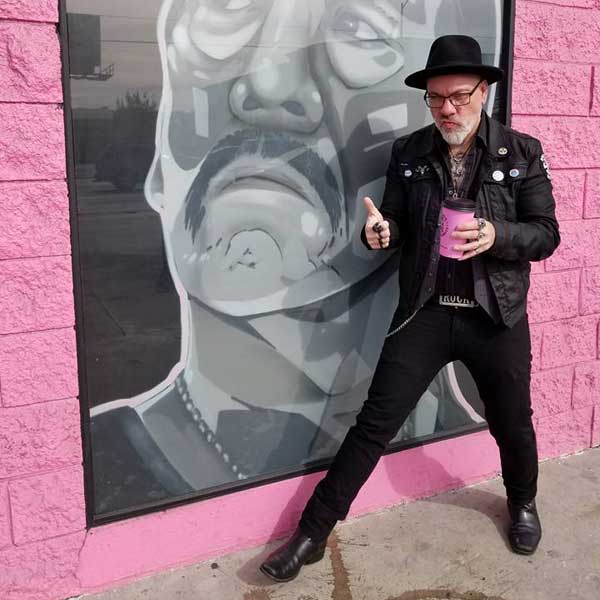“David Coverdale’s had to become a pop singer to get success. There’s your glamour bands and your denim-clad groups. And your denim-clad groups survive”: How AC/DC swam against the 80s hair metal tide and made an underrated gem in Blow Up Your Video
AC/DC’s 1988 album Blow Up Your Video was a tipping point for the hard rock icons – and for guitarist Malcolm Young in particular

In April 1988, Angus Young was asked how it felt to be fashionable again. “Disgusting!” he replied, laughing.
The joke was typical of a man who has never given two hoots about what tastemakers have to say. But the question was entirely valid at a time when AC/DC were finally pulling out of their mid-80s slump.
Angus was talking to Sounds journalist Mary Anne Hobbs during the video shoot for the band’s single That’s The Way I Wanna Rock ’N’ Roll. Their previous release, the blistering, full-throttle rock’n’roll song Heatseeker, had recently reached No.12 on the UK chart – the biggest hit single of their entire career. Parent album Blow Up Your Video had hit number two. But the chart positions, while impressive, were only a part of the story.
What made AC/DC fashionable in 1988, and relevant to a younger rock audience, was the kudos they received from some of the rising stars of the era. “Suddenly AC/DC are in vogue and as a ripe as Zeppelin for plagiarism,” Hobbs wrote. “The renegades of the metalloid resurgence are quick to cite AC/DC’s influence, and regurgitate their riffs whole.”
Guns N’ Roses named AC/DC as a key inspiration alongside Aerosmith and the Sex Pistols, and performed Whole Lotta Rosie during their first UK gigs at London’s Marquee club in June 1987. The Cult, guided by future AC/DC producer Rick Rubin, made the transformation from goth heroes to a balls-out hard rock band with their 1987 album Electric, on which the opening track Wild Flower recycled the riff from AC/DC’s Rock ’N’ Roll Singer. And Metallica drummer Metallica’s Lars Ulrich proudly wore a Back In Black tour jacket given to him by his band’s co-manager Peter Mensch, who had previously worked with AC/DC.
Angus being Angus, he wasn’t going to make a song and dance about the band’s resurgence. “We’ve never been the critics’ love,” he said. “The audience were always the critics to me. If a kid came up to me and said, ‘I didn’t like your show’, that would break my heart. But if you make a record and your audience likes it, they buy it.”

Angus had been around long enough to know how the music business worked, how fashions come and go, how bands rise and fall. He said he hadn’t heard Guns N’ Roses or Metallica. He was still listening to the same stuff he’d always loved – Chuck Berry, Little Richard, Muddy Waters. He reiterated the simple philosophy that had served AC/DC since their inception. “Rock music is what we do best, nice and loud and tough.” But in the making of Blow Up Your Video, the band had made one significant change – and it would prove pivotal to the greater success that followed at the turn of the 90s.
Sign up below to get the latest from Classic Rock, plus exclusive special offers, direct to your inbox!
AC/DC’s 1983 album Flick Of The Switch had been produced by the band. 1985 follow-up Fly On The Wall by Angus and Malcolm Young. Neither album had been anywhere near as good or as popular as those they had made with the brilliant producer ‘Mutt’ Lange: Highway To Hell, Back In Black and For Those About To Rock.
AC/DC wised up with Blow Up Your Video. It marked the return of the production team that had worked on every AC/DC album from 1975 to 1978: Harry Vanda and George Young, the latter the elder brother of Malcolm and Angus. In this was a tacit admission. When AC/DC were making records, they needed an extra pair of ears – or in this case, two.
In 1988, Malcolm Young gave a rare interview for Japanese TV in which he noted the success of Blow Up Your Video in the same nonchalant manner as Angus. “There’s still people out there that like us,” he smiled.
Malcolm explained that the album’s title was a wry comment on a generation of rock fans glued to MTV. “The idea was to get the kids out of their homes and down to the show. Don’t watch TV – come and see the real thing.” He also cocked a snook at the big-haired rock bands of the period, principally Whitesnake. “David Coverdale’s got success but he’s had to become a pop singer to get it,” he sneered. “There’s always your glamour bands and your denim-clad groups. And you usually find out that your denim-clad groups are still surviving and the glam ones fade away.”
Behind the scenes, however, Malcolm Young had his own problems. In May 1988 he was forced to step down from the North American leg of the Blow Up Your Video tour in order to undergo treatment for alcohol dependency. Standing in for Malcolm at those shows was his nephew Stevie Young, whose former band Starfighters had supported AC/DC in 1980.
“The funny thing was I never drunk heaps, I just drank consistently and it caught right up on me,” said Malcolm in 2004. “Angus was going, ‘I’m your brother; I don’t want to see you dead here. Remember Bon?’ So I took that break and cleaned myself up.”
And shortly after the tour finished in November 1988 came a permanent change in personnel, when drummer Simon Wright was sacked and replaced by Chris Slade, a bald veteran who had previously been a member of Jimmy Page and Paul Rodgers’ brief-lived supergroup The Firm. AC/DC’s unsteady 80s was drawing to a close. The new decade was ahead of them, and there was everything to play for.
Classic Rock contributor since 2003. Twenty Five years in music industry (40 if you count teenage xerox fanzines). Bylines for Metal Hammer, Decibel. AOR, Hitlist, Carbon 14, The Noise, Boston Phoenix, and spurious publications of increasing obscurity. Award-winning television producer, radio host, and podcaster. Voted “Best Rock Critic” in Boston twice. Last time was 2002, but still. Has been in over four music videos. True story.


